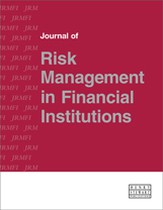CRD V/CRR II: A comprehensive synopsis of the first European step towards implementing Basel IV (Part I)
Abstract
‘Basel III: Finalising post-crisis reforms’ — often referred to as ‘Basel IV’ by the banking industry — is the most extensive regulatory change package of all time. By using the term Basel III instead of Basel IV, the Basel Committee on Banking Supervision (BCBS) may wish to give the impression that only its approaches and ideas from the Basel III papers of 2010 are updated and expanded; the work is, so to speak, complete. Nothing could be less consistent with the facts. Basel IV extends the prudential rules with known standards on the one hand, and on the other, it introduces entirely new approaches that until now have not existed. For transposing the Basel IV recommendations into the European supervisory regulations, two banking packages are necessary. The first package was adopted in June 2019. In particular, the implementation of the amendments to the capital requirements directive (CRD V) and capital requirements regulation (CRR II) will present many banks with major challenges. The second package is still in the planning stage. A draft of the second package, probably including CRD VI and CRR III, is anticipated in mid-2020.
The full article is available to subscribers to the journal.
Author's Biography
Martin Neisen is a Partner in the Regulatory Management department and a Global Basel IV Leader at PricewaterhouseCoopers (PwC) in Frankfurt am Main, responsible for coordinating PwC’s initiatives with respect to Basel IV implementation. These initiatives cover all aspects regarding the impact and execution of Basel IV, including strategic implications, standardised approaches, internal models, business implications, IT (information technology) as well as knowledge management. He leads the Regulatory Management department in PwC Europe.
Hermann Schulte-Mattler is a Professor of Finance at the Dortmund University of Applied Sciences. Previously he worked for many years in the banking regulation division of the Federal Association of German Banks. Following studies in Economics at the University of Duisburg-Essen and Ohio State University and subsequent employment at a major bank, he studied in the PhD finance programme at the Wharton School at the University of Pennsylvania. He is the author of an extraordinary number of publications on the topic of international harmonisation of banking supervision rules and risk management. Furthermore, he is the co-publisher of a leading commentary on the German Banking Act and implementing regulations.
Citation
Neisen, Martin and Schulte-Mattler, Hermann (2020, March 1). CRD V/CRR II: A comprehensive synopsis of the first European step towards implementing Basel IV (Part I). In the Journal of Risk Management in Financial Institutions, Volume 13, Issue 2. https://doi.org/10.69554/MDPX5951.Publications LLP
